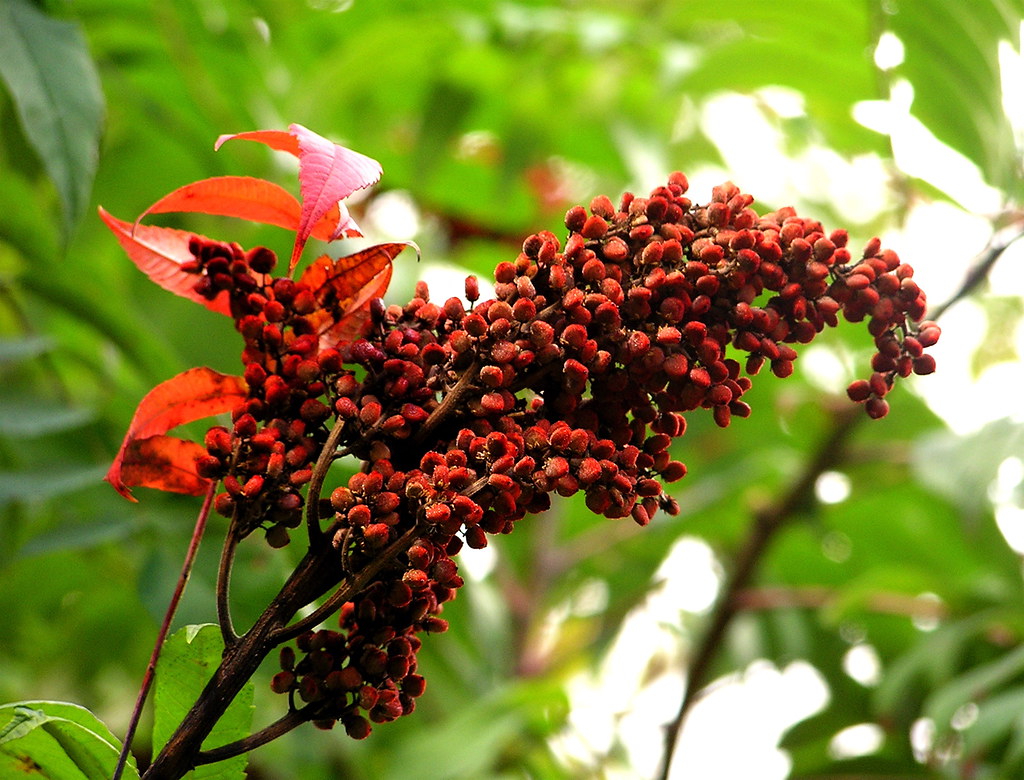Botanical Description: Black Cohosh, scientifically known as Cimicifuga racemosa, is a perennial herbaceous plant native to North America. It belongs to the Ranunculaceae family and is characterized by its tall, slender stems that can reach heights of 4 to 8 feet. The compound leaves are large, divided, and serrated, giving the plant an elegant appearance. In late spring and early summer, long spikes of small, white flowers bloom, creating a striking contrast against the dark green foliage. The plant’s distinctive black roots, from which it derives its name, have been traditionally used for medicinal purposes.
Disclaimer: This Materia Medica is provided for informational purposes only and should not replace professional medical advice. Please consult with a qualified healthcare practitioner or herbalist before using any herbal remedies.
Therapeutic Actions: Black Cohosh is renowned for its diverse therapeutic actions, particularly in addressing women’s health issues. As a prominent herbal remedy, it exhibits the following key actions:
- Hormonal Regulation: Black Cohosh is often employed to alleviate symptoms associated with hormonal fluctuations, such as hot flashes, mood swings, and sleep disturbances.
- Uterine Tonic: It is recognized for its ability to tonify the uterine muscles, making it a valuable herb for conditions related to uterine spasms and discomfort.
- Anti-Inflammatory: Black Cohosh possesses anti-inflammatory properties, contributing to its effectiveness in mitigating joint pain and inflammation, especially in conditions like rheumatoid arthritis.
- Mild Sedative: The herb exhibits mild sedative effects, aiding in the management of nervous tension, anxiety, and stress-related symptoms.
Constituents: Black Cohosh contains a complex array of bioactive compounds, including:
- Triterpene Glycosides: Act as the primary active constituents, influencing hormonal regulation.
- Flavonoids: Contribute to the herb’s anti-inflammatory and antioxidant properties.
- Isoflavones: Provide support for hormonal balance.
- Salicylic Acid: Imparts mild analgesic and anti-inflammatory effects.
Traditional Uses: Black Cohosh has a rich history of traditional use among Native American communities and later adopted by European settlers. The herb has been traditionally employed for:
- Menopausal Symptoms: Alleviating hot flashes, night sweats, and mood swings associated with menopause.
- Menstrual Irregularities: Regulating menstrual cycles and relieving menstrual cramps.
- Rheumatic Conditions: Easing joint pain and inflammation in conditions like arthritis.
- Nervous System Support: Providing mild sedation for conditions related to nervous tension and anxiety.
Dosage and Preparation: Dosage and preparation may vary depending on the specific health concern. Common forms of administration include:
- Tincture: 2-4 ml, three times daily.
- Capsules: 20-40 mg, two times daily.
- Tea: Infuse 1 teaspoon of dried root in 1 cup of hot water, steep for 10-15 minutes, and consume up to three times daily.
It is advisable to start with the lowest effective dose and adjust as needed under the guidance of a healthcare professional.
Cautions and Considerations: While Black Cohosh is generally regarded as safe, certain precautions should be noted:
- Pregnancy and Lactation: Use with caution in pregnant or lactating individuals, as its hormonal effects may have implications.
- Liver Health: Individuals with liver disorders should consult a healthcare professional before using Black Cohosh, as isolated cases of hepatotoxicity have been reported.
- Interaction with Medications: Consultation with a healthcare provider is essential, especially for individuals taking hormone therapies or medications metabolized by the liver.
Conclusion: Black Cohosh stands as a versatile and valuable herb in the herbalist’s repertoire, particularly for addressing women’s health concerns and inflammatory conditions. Its historical use, coupled with contemporary research, underscores its significance in holistic healthcare. However, prudence in usage, individual considerations, and consultation with a qualified healthcare practitioner are essential to ensure safe and effective application.





